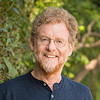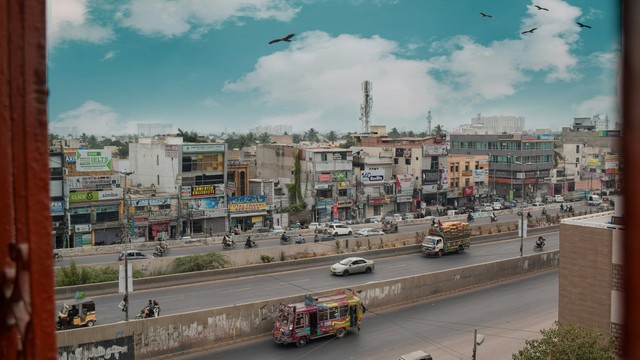If we don't count the poor, the poor don't count
Research in several countries shows how governments and development agencies undercount the scale and depth of urban poverty, writes David Satterthwaite.


People need at least US$50 to survive for a month in Hanoi. This is twice the official urban poverty line. (Photo: copyright Christine Zenino)
The main tools most governments use to measure poverty grossly underestimate the scale of the problem and must be reset. This includes 'poverty lines', the minimum amounts of money people in a given place need to avoid poverty.
City mayors and national governments, the World Bank and the United Nations all use poverty lines to set policy. The Millennium Development Goals, for instance, use US$1.25 a day as the line that marks extreme poverty. The post-2015 Sustainable Development Goals will probably do the same.
But this poverty line and most other lines are fatally flawed. They only measure part of what it means to be poor, and that means they undercount, particularly in urban areas.
Under counting the poor
In recent years researchers have reviewed the accuracy of poverty lines in cities in Argentina, Egypt, India, Sri Lanka, Vietnam and Zambia, where many people live in informal settlements characterised by poor-quality, overcrowded housing and a lack of infrastructure and services.
These studies, which are available to download from the links below, show how the proportion of the urban population 'living in poverty' is much higher than the proportion defined as poor in official statistics based on poverty lines.
- In Colombo, Sri Lanka, official statistics suggest that only 3.6 per cent of people are poor, yet around half of the city's population live in informal settlements
- According to the official poverty line in Pune, India, less than two per cent of the population are poor, yet nearly 40 per cent of the people live in slums
- Most studies suggest that 5-10 per cent of people in Cairo, Egypt are poor, but up to two-thirds live in informal settlements.
It's a similar story across much of Africa, Asia and Latin America, where official figures for who is poor do not reflect at all who lives in poverty. Interviews with women from informal settlements in Buenos Aires, Argentina found, for instance, that only one had a household income below the official poverty line. Yet most of the women lived in houses built with second–hand materials. They struggled to feed their families, pay school fees and access healthcare. Half of them had no water, sanitation, gas or electricity. But according to the official poverty line, these women were not poor.
Putting a price on poverty
Two poverty lines used in Vietnam suggest either 0.3 per cent or 8.3 per cent of the urban population are poor. But, as in most other countries, these poverty lines do not reflect the real costs of life in a big city. That includes not only the increasingly expensive food, but also non-food costs such as adequate accommodation and basic services. As one respondent to the research there noted, people need at least US$50 to survive for a month in Hanoi. This is twice the official urban poverty line.
When poverty assessments in Vietnam include housing conditions and access to services, the proportion of urban dwellers who are poor rises dramatically (see Figure 1). Food and non-food costs there have risen faster than incomes, especially for migrants, who suffer more deprivations than registered urban residents but are not included in urban poverty statistics.

In all the nations and cities studied, poverty lines need to be reset. Pune's poverty line is, for example, based on what it costs to provide each person with a specified minimum number of calories per day. It does not provide for what people need to spend on housing rent, health and education. It does not take into account other costs such as the insecurity arising from having no formal land tenure, and the hardships and health costs caused by inadequate access to basic facilities.
In Zambia, the government does at least include non-food costs in its poverty line but both these costs and those for food are far lower than what people actually have to pay, as Figure 2 shows. What's more, the hypothetical 'basket of goods' used to set the food costs does not represent urban diets, making no allowance for sugar, bread, meat, eggs or tea.

Time for new lines
What these studies show is that poverty lines are set too low for urban areas in many nations and so are under-counting the scale and depth of urban poverty. This is especially so for the US$1.25/day poverty line. A poverty line should be based on the cost of food and non-food needs for individuals and households in each nation and city. This includes the cost of housing, water, transport, energy, health care and keeping children at school.
In informal settlements many people have to pay high prices for water from vendors because they have no water piped to their home. They must pay to use public toilets and washing facilities as these are lacking in their (usually one-room) homes. Many have to pay for private schools and health care because they are not allowed to access public services.
We know that around one billion people live in such settlements. We know they live in poverty but, according to outdated poverty lines, they are not poor. If governments, donors and development agencies are to have any hope of tackling poverty, they must first be able to count the poor, and that means redrawing poverty lines.
David Satterthwaite is senior fellow in IIED's Human Settlements Group (david.satterthwaite@iied.org)
Download the research papers:
- Poverty lines and lives of the poor: Underestimation of urban poverty – the case of India
- Broadening poverty definitions in India: Basic needs in urban housing
- Interrogating urban poverty lines: The case of Zambia
- Urban poverty in Vietnam – a view from complementary assessments
- Appropriateness of the Sri Lanka poverty line for measuring urban poverty: the case of Colombo
- Poverty lines in Greater Cairo: Underestimating and misrepresenting poverty
- Assessing the scale and nature of urban poverty in Buenos Aires



